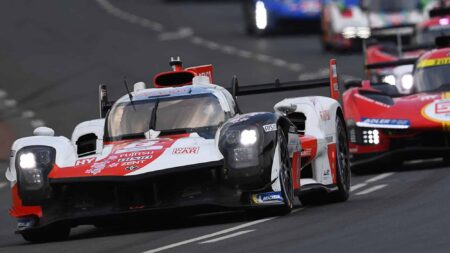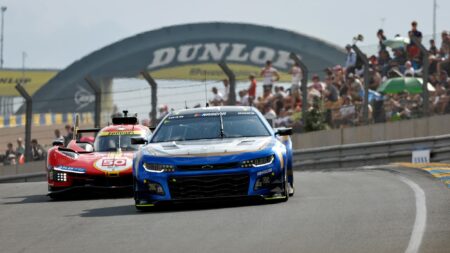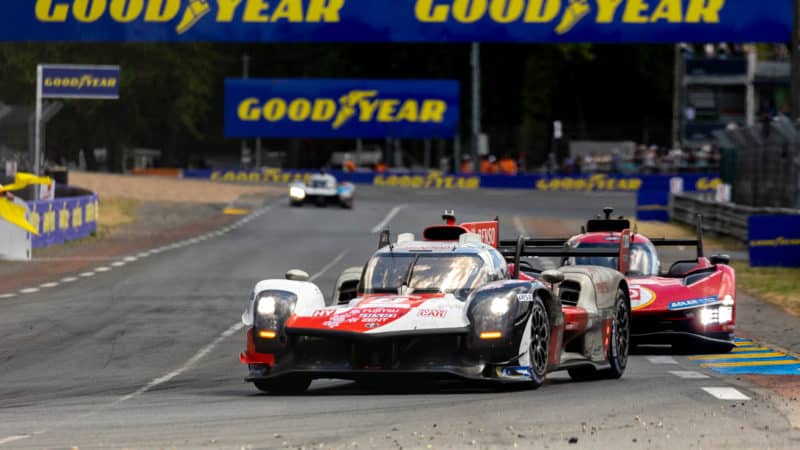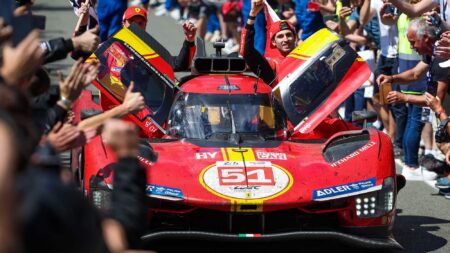It was a sombre Hirakawa who joined the post-race press conference, contemplating the error that cost Toyota the race. But, as his team-mates quickly said. The WEC champion, who won Le Mans last year, shouldn’t shoulder all the blame.
The train of events that led to his crash was set in play hours before he got into the car by a few laps of ingenious Ferrari teamwork that opened the gap to Toyota. Without that, Hirakawa may have never been given the fateful instruction.
The race had always looked close: five teams took the lead in the highly-charged opening hours with changeable weather and a string of crashes, from frontrunners to several lower down the grid.
Overnight, the race did settle down and a battle for the lead emerged between the No51 Ferrari and No8 Toyota. Each had lost a team-mate from the fight: the other Toyota was out of the race after being rear-ended, and the No50 Ferrari lost 20min when a stone holed its radiator.
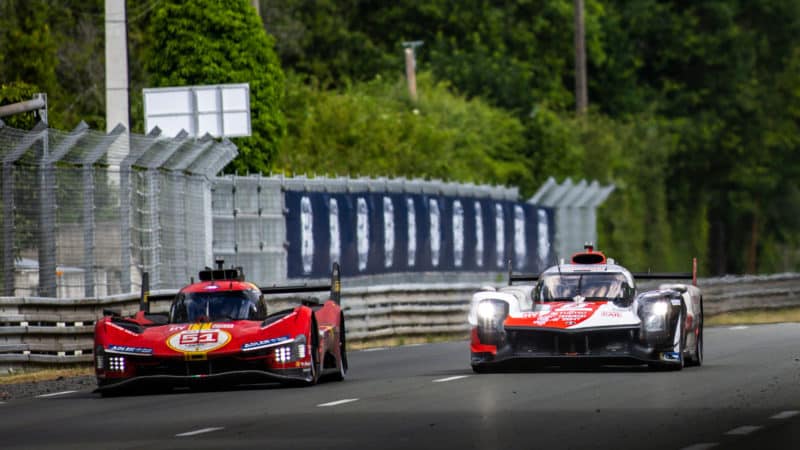
Ferrari and Toyota duel on the Mulsanne
DPPI
Intense battle for the lead
As night turned to day, the battle raged on, with the gap typically measured in seconds and the slightest hiccup proving significant: Toyota’s 14sec lead evaporated after an unfortunate squirrel damaged the nose.
“We were properly on the limit,” said Ferrari’s James Calado. “There was nothing spare there. We were pushing as hard as we could. At that time, both cars were very, very similar in terms of pace.”
Ferrari was ahead by around a minute on lap 255 when the No51 car pitted, followed by the Toyota. It was a straightforward stop, until the car stayed stationary. The complex systems in the cockpit weren’t communicating with each other properly and a full reset was needed.

